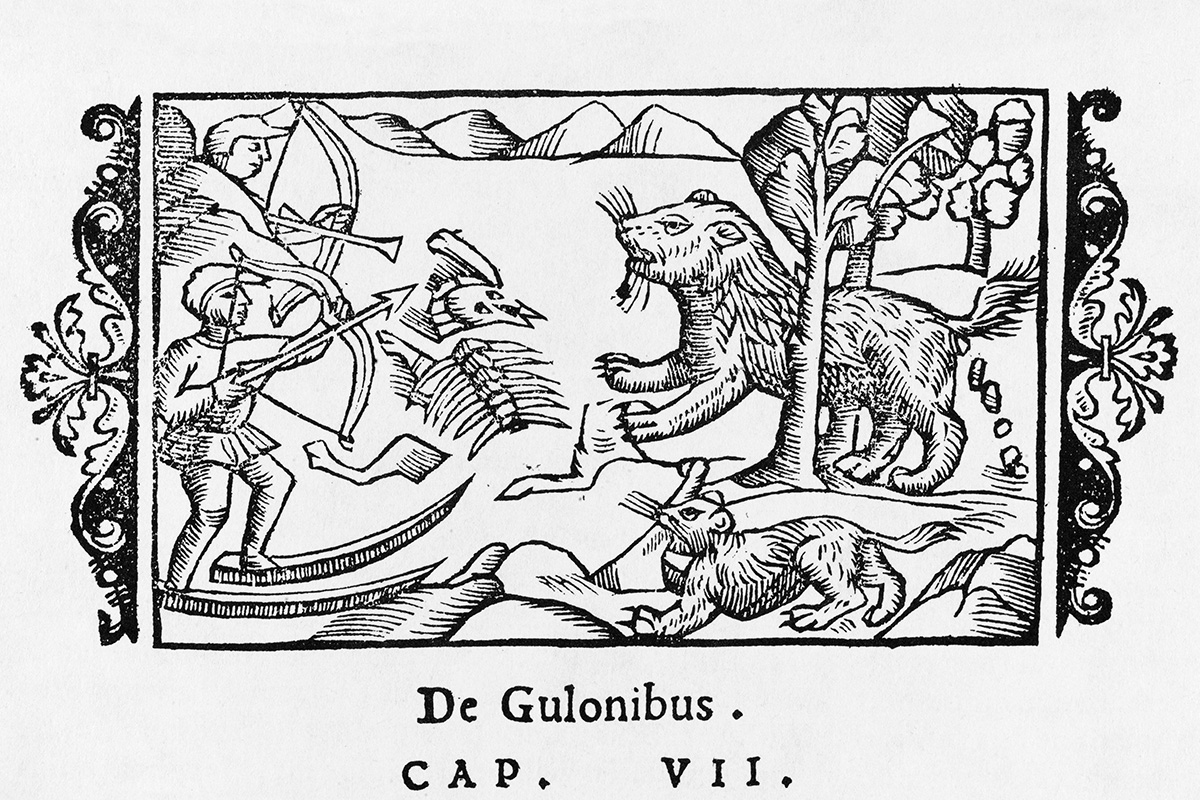13 Bizarre Mythical Monsters to Haunt Your Halloween
Night terrors

Traditional Halloween creatures — vampires, werewolves and killer clowns — may give you the shivers, but these mythic horrors from around the world are truly nightmare fuel.
From grotesque human/animal hybrids to sentient and vengeful flying body parts, here are just a few of the lesser-known things that go bump in the night that might make you lock your doors and hide under your covers with a flashlight.
Adlet (Inuit)

Inuit folklore tells of the Adlet, human-dog hybrids with dogs' legs and a human body, who were born to a woman that mated with a dog, according to a collection of Inuit tales and songs published in 1889 in the Journal of American Folklore.
The Adlet had human bodies with hairy dogs' legs, and they killed and ate their grandfather after he murdered their canine father, according to the legend.
Acheri (India)

The unnerving childlike phantom known as the acheri originated in Hindu folklore in northern India, though it also appears as a Native American myth among the Chippewa people, according to the Encyclopedia of Spirits and Ghosts in World Mythology (McFarland, 2016). The acheri is the ghost of a young girl who died under tragic circumstances. She returns from beyond the grave, descending from the mountains after dark to bring sickness to children and the elderly. Pictured here as a character in the PlayStation role-playing video game "Shin Megami Tensei: Devil Summoner," the acheri typically appears as a pale and sickly looking young girl, and when its shadow falls upon its victims they fall ill with a deadly respiratory disease.
Nuckelavee (Scotland)

The Scottish Nuckelavee is a "skinless centaur" with a snout like a pig's that expels gusts of steam, a single enormous eye, and arms that drag upon the ground, according to the "Encyclopedia of Fairies in World Folklore and Mythology" (McFarland, 2013). It lives in the ocean and can kill people by breathing on them, leading them to waste away and eventually die.
Gulon

A description of Sweden's Gulon, a fearsome legendary animal with the head and ears of a cat, a body like a lion's and the tail of a fox, appeared in "A Description of the Northern People," an exhaustive account of the folklore and history of Nordic countries, published in 1555 by Swedish writer Olaus Magnus. The Gulon gorges itself on carrion until it is grossly distended, then squeezes itself between two trees to make room for more, according to "Giants, Monsters, and Dragons: An Encyclopedia of Folklore, Legend, and Myth" (W.W. Norton & Co., 2001).
Get the world’s most fascinating discoveries delivered straight to your inbox.
Futakuchi-onna

This eerie creature looks like an ordinary woman, but has a ravenous second mouth on the back of her head, hidden by her hair. The mouth is insatiable; it gorges on any food it can find, fed by animated strands of the woman's hair, and usually appears as a punishment afflicting people who are extremely greedy or stingy, according to Yokai.com, an online database of Japanese ghosts and monsters.
Rompo

The scavenging rompo survives by eating human corpses, according to legends that originated in India and across Africa. It is relatively small, measuring approximately 3 feet (1 meter) long, with the front legs of a badger, the back legs and rear of a bear, the head of a hare and the ears of a person, topped with a luxurious horse's mane, according to the "Encyclopedia of Beasts and Monsters in Myth, Legend and Folklore" (McFarland, 2016).
Finfolk

In the Orkney Islands, an archipelago off the northeastern coast of Scotland, people once whispered of the Finfolk, a tribe of sorcerers and shapeshifters who were skilled at boating and who could bend the ocean to their will. Finfolk could live underwater or on land, though their permanent home was usually described as a marvelous city at the bottom of the ocean, and they would venture into towns and villages to steal humans as husbands or wives, according to Orkneyjar, a nonprofit website describing Orkney history and folklore.
Bokkenrijders

Little is known about these figures from Dutch folklore, who called the name of the devil to summon flying goats that they would ride through the air, to practice untold acts of mischief. The name — "goat riders" in Dutch — was applied in the 18th century to bands of robbers that wild rumors described as the terrifying, flying goat riders of legend. Men suspected of being bokkenrijders were tortured and executed, with accusations condemning 31 people from a single municipality in Belgium between 1744 and 1776, the Belgian website Flanders Today reported.
Bunyip

Swamps, rivers, and shallow inland waters across Australia are rumored to be the home of the bunyip, a lanky, green-furred, razor-clawed creature "about twice the size of the average man," with webbed hands and feet like a duck, the news agency ABC Riverland reported in 2007. Children were warned against playing too close to the water's edge, lest the bunyip catch them and drag them under to drown.
Kumiho

In Korean mythology, the kumiho — a malevolent demon fox-woman with nine tails — is a man-eater, both literally and figuratively. She is a killer with a voracious sexual appetite and she often consumes her conquests, according to EsoterX, a website that explores the anthropological sources of monsters in folklore from around the world.

Mindy Weisberger is a science journalist and author of "Rise of the Zombie Bugs: The Surprising Science of Parasitic Mind-Control" (Hopkins Press). She formerly edited for Scholastic and was a channel editor and senior writer for Live Science. She has reported on general science, covering climate change, paleontology, biology and space. Mindy studied film at Columbia University; prior to LS, she produced, wrote and directed media for the American Museum of Natural History in NYC. Her videos about dinosaurs, astrophysics, biodiversity and evolution appear in museums and science centers worldwide, earning awards such as the CINE Golden Eagle and the Communicator Award of Excellence. Her writing has also appeared in Scientific American, The Washington Post, How It Works Magazine and CNN.
